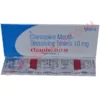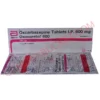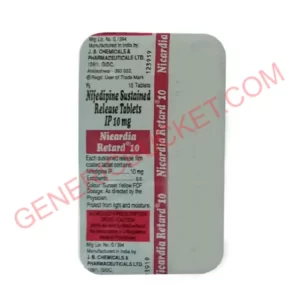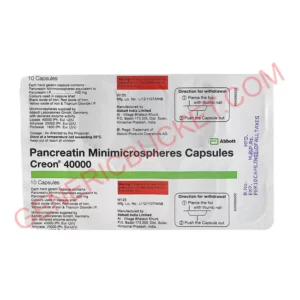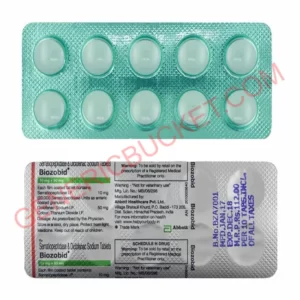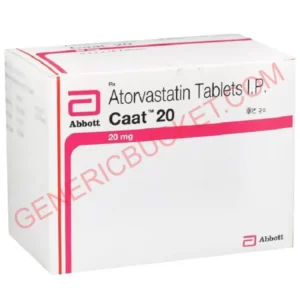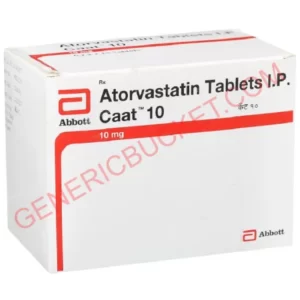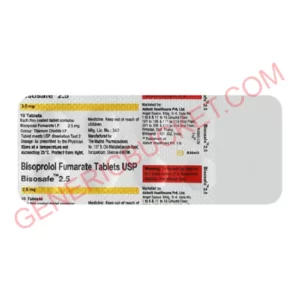Oxring 150mg Tablet (Oxcarbazepine 150mg)
$44.00 – $116.00
| Country of Origin | India |
|---|---|
| Dosage Form | Tablets |
| Generic Name | Oxcarbazepine |
| Indication | Epilepsy/Seizures |
| Manufacturer | Cipla Ltd |
| Packaging | 10 tablets in 1 strip |
| Composition | Oxcarbazepine (600mg) |
| Oxring 150mg Tablet (Oxcarbazepine 150mg) | |||
| Pack Size | Price | Price/Unit | Add To Cart |
| 50 Tablet/s | $44.00 (0.88/unit) | $0.88 | |
| 100 Tablet/s | $82.00 (0.82/unit) | $0.82 | |
| 150 Tablet/s | $116.00 (0.77/unit) | $0.77 | |
INTRODUCTION
Oxring 150mg TABLET contains Oxcarbazepine which belongs to the group of medicines called Anti-epileptics. It is used alone or in combination with other anti-epileptic medicines in children (aged 6 years and above) and adults to treat partial seizures with or without secondarily generalised tonic-clonic seizures. Seizure occurs due to a temporary fault in the brain’s electrical activity. Partial seizures involve a limited area of the brain but may spread to the whole brain and may cause a generalised tonic-clonic seizure.
Prior to treatment with OXRING 150 MG TABLET, your doctor may want you to take several blood tests to understand your existing condition and to safely use the drug and to decide the appropriate dose of this medicine.
Before taking Oxring 150mg TABLET, inform your doctor if you have liver, kidney (associated with low sodium levels in the blood) or heart problems (such as heart failure or heart rhythm disorder) or intolerance to certain sugars (such as lactose).
Patients taking OXRING 150MG TABLET may have thoughts of harming or killing themselves. If at any time you have these thoughts, immediately consult your doctor.
OXRING 150MG TABLET should be used with caution in pregnant women as there may be a risk to the unborn baby, it is advised to be taken only if clearly advised by the doctor. It is used with caution in breastfeeding women only if clearly advised by the doctor due to risk of side effects in breastfed infants.
OXRING 150 MG TABLET can be used in children above 6 years of age and your child’s doctor may monitor the thyroid function of the child before and during treatment with this medicine. OXRING 150MG TABLET should be used with caution in elderly patients (aged 65 years and above), especially in patients with kidney impairment.
The most common side effects of taking OXRING 150 MG TABLET are dizziness, nausea, vomiting, headaches, diarrhoea, constipation, stomach pain and skin rash. Consult your doctor if any of the side effects worsen.
USES OF Oxring 150mg TABLET
Used alone or in combination with other anti-epileptic medicines:
- To treat partial seizures with or without secondarily generalized tonic-clonic seizures (in adults and children aged 6 years and above)
HOW Oxring 150mg TABLET WORKS
OXRING 150MG TABLET helps to control electrical activity in the brain (by binding to sodium channels) which is out of control in epileptic patients. Thus, reducing the chances of having seizures.
DIRECTIONS FOR USE Oxring 150mg
Take Oxring 150 mg TABLET as advised by your physician. Swallow the medicine with a glass of water. Do not crush or chew the medicine. Your doctor will decide the correct dose and duration for you depending upon your age, body weight and disease condition. Do not stop taking OXRING 150MG TABLET unless your doctor advises you to stop.
SIDE EFFECTS OF OXRING 150MG TABLET
COMMON
- Dizziness, tiredness, drowsiness
- Nausea, vomiting, diarrhoea, constipation, stomach pain
- Headaches
- Depression, confusion, difficulty concentrating
- Low blood levels of sodium (can lead to confusion, decreased consciousness, swelling of the brain, problems with vision, nausea, vomiting or worsening of seizures)
- Agitation, other mood changes
- Lack of emotion or motivation
- Disturbed, blurred or double vision
- Uncontrolled eye movement
- Loss of coordination, shaking
- Memory loss
- Spinning sensation (vertigo)
- Skin rash, acne
- Hair loss
- Feeling weak, increase in weight
UNCOMMON
- Itchy skin
Stop taking Oxring 150mg TABLET and contact your doctor immediately if you experience any of the following side effects:
- Signs of low number of white blood cells (increase in the number of infections with fever, severe chills, sore throat or mouth ulcers)
- Potentially life-threatening skin rashes like Stevens-Johnson syndrome, toxic epidermal necrolysis (initially reddish target-like spots or circular patches often with central blisters on the trunk, severe blistering of the skin or mucous membranes of the lips, eyes, mouth, nasal passages or genitals and skin peeling on most of the body surface)
- Signs of a blood disorder (tiredness, breathlessness when exercising, looking pale, headache, chills, dizziness, infections leading to fever, sore throat, mouth ulcer, bleeding or bruising more easily than normal, nose bleeding, reddish or purplish patches, unexplained blotches on skin)
HOW TO MANAGE SIDE EFFECTS
Nausea or vomiting:
Stick to simple meals while taking this medicine. Avoid eating oily rich, fried or spicy foods. Do not lie down or sleep immediately after eating. Consult your doctor if the symptom does not improve.
Headache:
Drink ample amount of water and avoid skipping meals. Get adequate rest. Try to be relaxed and stress-free. Apply pain relieving balm on your forehead if necessary. Consult your doctor if the symptom does not improve.
Dizziness:
Lie down until the dizziness is gone, then get up slowly. Move slowly and carefully, do not hurry. Get adequate rest. Drink plenty of water and other fluids. Avoid coffee, cigarettes, alcohol and drugs. Consult your doctor if the symptom gets worse.
Constipation:
Eat plenty of fibre-rich foods such as fresh fruits, vegetables and cereals and drink plenty of water. Exercise more regularly (such as daily walking). Consult your doctor if the symptom does not improve.
Diarrhoea:
Drink lot of fluids, such as water to keep yourself hydrated. Avoid eating high-fat or spicy foods. Try to avoid taking any medicine on your own to treat diarrhoea and consult your doctor if the symptom gets worse.
Stomach pain:
Try to rest and relax. Eat and drink slowly or try to have smaller meals more frequently. Keep a heating pad on your stomach. If the symptom does not improve, consult your doctor.
WARNING & PRECAUTIONS Oxring 150mg
PREGNANCY
OXRING 150 MG TABLET should be used with caution in pregnant women as there may be a risk to the unborn baby. It will be given to you only if clearly necessary. Do not stop taking OXRING 150 MG TABLET during pregnancy without doctors’ advice. Women of childbearing age should use other effective contraceptives because it affects the work of hormonal contraceptives, increasing the risk of getting pregnant. Consult your doctor before taking OXRING 150 MG TABLET.
BREASTFEEDING
OXRING 150 MG TABLET should be used with caution in breastfeeding women only if considered clearly necessary as it passes through the breast milk and can cause side effects in breastfed infants such as excessive sleepiness or poor weight gain. Consult your doctor before taking OXRING 150MG TABLET.
DRIVING AND USING MACHINES
Do not drive or operate any machines after taking OXRING 150MG TABLET if you experience dizziness, drowsiness, balance or co-ordination problems, eye problems like double or blurred vision, low blood levels of sodium causing muscle weakness or decreased consciousness, especially when starting the treatment or increasing the dose.
ALCOHOL
Avoid consumption of alcohol while taking OXRING 150 MG TABLET as it might make you feel very drowsy.
KIDNEY
OXRING 150MG TABLET should be used with caution in patients with kidney problems (especially associated with low sodium levels in the blood). Your doctor may initiate the treatment with the lowest effective dose and may gradually increase the dose of this medicine. Your doctor will examine your blood before treatment and at regular intervals during treatment with this medicine. Consult your doctor before taking OXRING 150MG TABLET.
LIVER
OXRING 150MG TABLET should be used with caution in patients with liver problems or who develop liver problems during treatment and in serious liver problems your doctor may adjust the dose. Consult your doctor before taking OXRING 150MG TABLET.
ALLERGY
Do not take OXRING 150 MG TABLET if you are allergic to Oxcarbazepine, eslicarbazepine or any other ingredients of this medicine.
HEART DISEASE
OXRING 150MG TABLET should be used with caution in patients with heart failure (signs include breathlessness, swelling of the feet or legs due to fluid build-up) or heart rhythm disorder. Consult your doctor before taking OXRING 150MG TABLET.
OTHERS
Before taking OXRING 150MG TABLET, inform your doctor if you:
- Have low blood levels of sodium (due to certain medications such as diuretics or non-steroid anti-inflammatory drugs (NSAIDs))
- Intolerance to certain sugars
Use in pediatrics:
OXRING 150MG TABLET is not recommended for use in children (under 6 years of age) as it has not been shown to be safe and effective in this age group. Your child’s doctor may monitor the thyroid function of the child before and during treatment with this medicine and may adjust the dose depending on the child’s body weight. Consult your child’s doctor for advice.
Use in geriatrics:
OXRING 150MG TABLET should be used with caution in elderly patients (aged 65 years and above), especially in patients with kidney impairment and your doctor may adjust the dose. Consult your doctor before taking OXRING 150 MG TABLET.
INTERACTIONS
A. Drug – Drug interactions:
Before taking OXRING 150MG TABLET, inform your doctor if you are taking any of the following medicines:
- Other medicines used to treat fits (Ex. phenobarbital, phenytoin, carbamazepine, lamotrigine and valproic acid)
- Medicines used to prevent pregnancy (Ex. ethinyl estradiol, desogestrel)
- Medicines to treat mental illness (Ex. lithium, phenelzine and moclobemide)
- Medicines used to treat fluid retention (Ex. furosemide, spironolactone)
- Desmopressin (used to treat water diabetes)
- Medicines used to relieve pain and inflammation (Ex. indomethacin, ibuprofen)
- Medicines used to control the immune system to prevent organ rejection after transplantation (Ex. ciclosporin, tacrolimus)
- Rifampicin (used to treat infections)
Overdosage:
If you or anyone else accidentally takes too much of OXRING 150 MG TABLET, consult your doctor immediately or visit the nearby hospital. Overdosage symptoms of OXRING 150MG TABLET are low blood levels of sodium, anger, agitation, confusion, drowsiness or sleepiness, dizziness, nausea, vomiting, tiredness, fast or irregular heartbeat, shaking, fits, headache, coma, loss of consciousness, uncontrolled twitching or jerking, double or blurred vision, narrowing of the pupil, low blood pressure, breathlessness, an unusual degree of muscular or bodily activity, lack of coordination of movements and uncontrolled eye movements.
Related products
Antibiotics
Angina Pectoris Anti-Anginals
Angina Pectoris Anti-Anginals
Gastro Health
Gastro Health
Heart & Blood Pressure
Heart & Blood Pressure
Antibiotics
Heart & Blood Pressure


